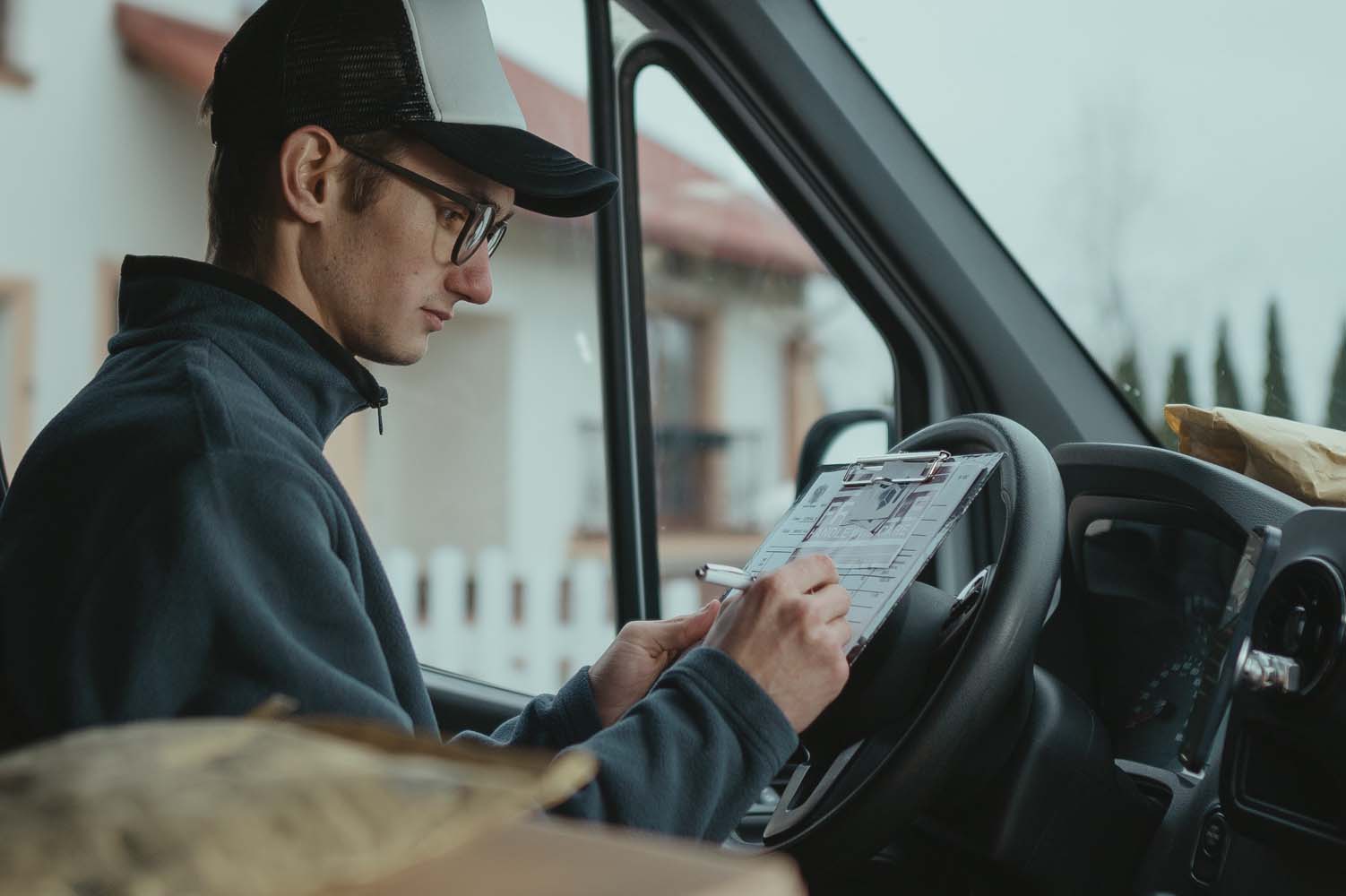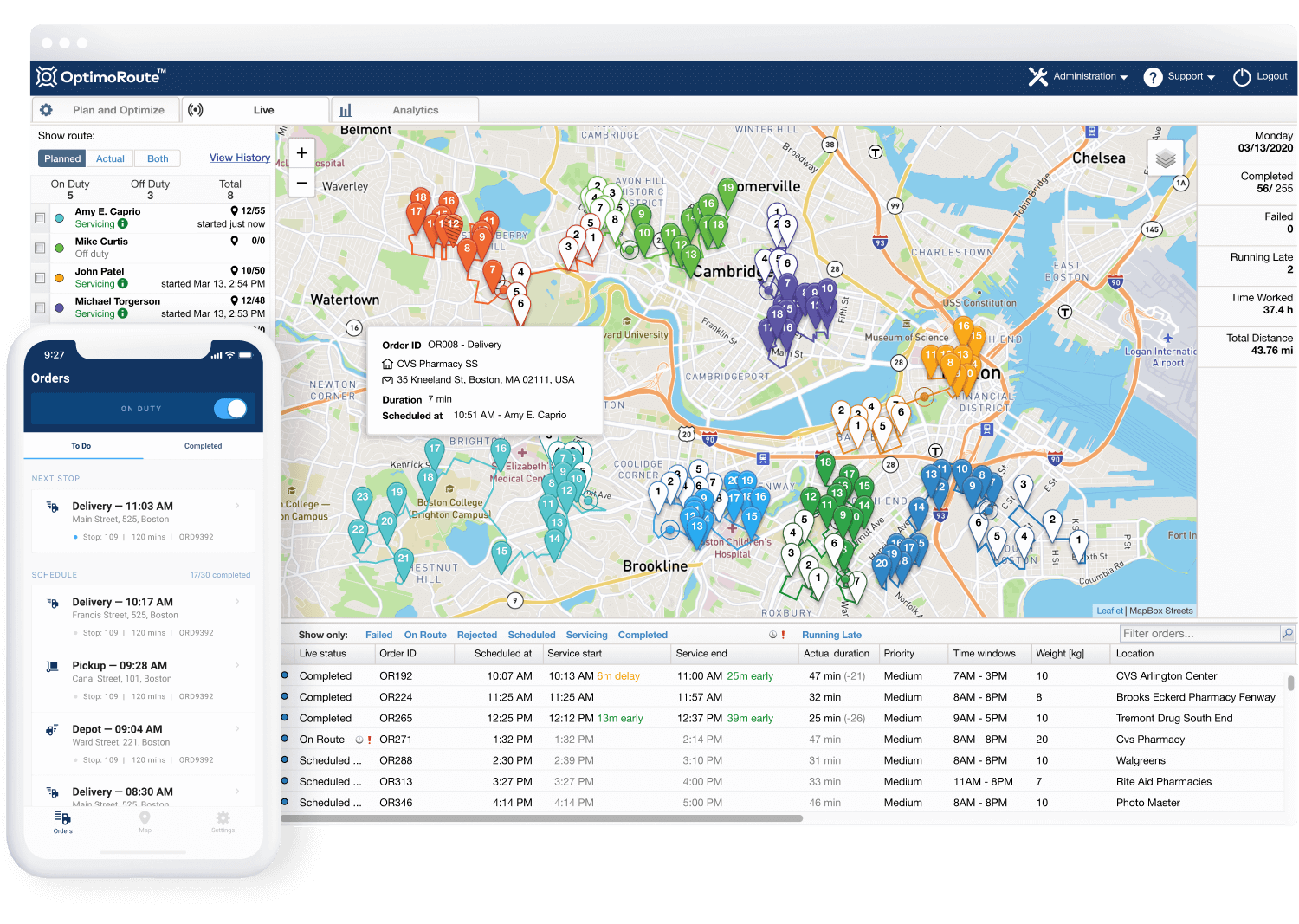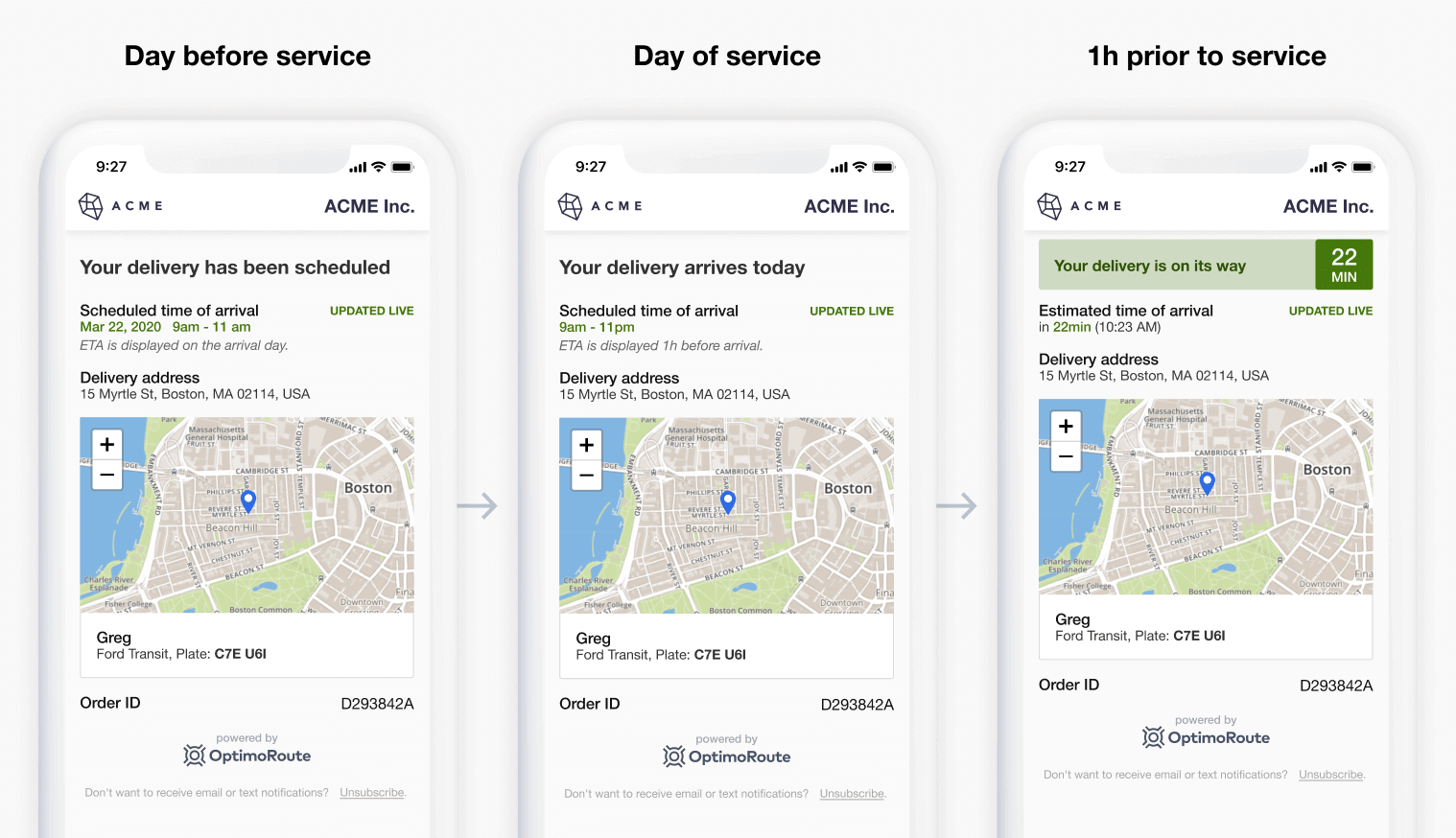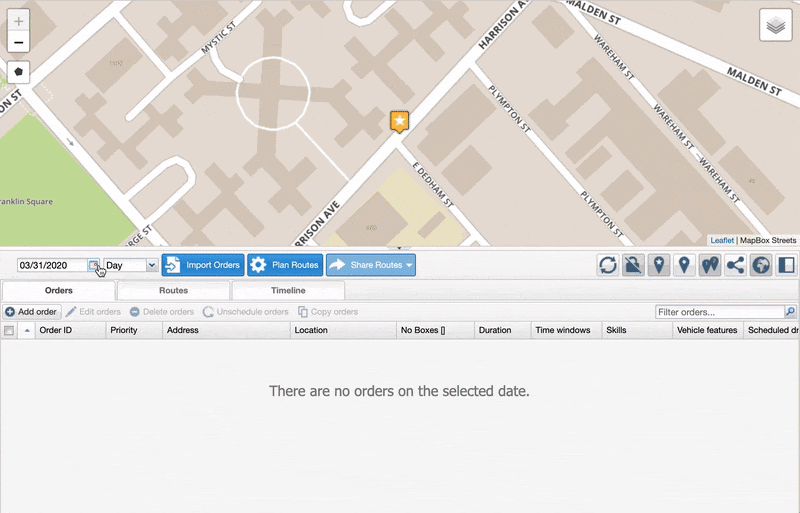What Is ATD and Why Does It Matter?
6 min read

There’s nothing more frustrating than sitting at your gate at the airport, watching the minutes tick past your flight’s scheduled departure time. Why? Because it means your arrival time will almost assuredly be delayed too, wreaking havoc on your carefully laid plans—usually, without any clear idea of exactly how long you’ll be sitting there.
Delays in departure time for your business, whether it’s a package delivery or on-call service appointment, cause the same frustrations for your customers. You don’t want to keep them waiting, which means that deliveries and service calls need to happen on time, within an expected time frame.
Closely understand and track the actual time of departure (ATD) for vehicles in your fleet and use that data to better optimize routes and prevent delivery and service delays.
Jump to the section that interests you most:
- What Does the Abbreviation “ATD” Stand For?
- Why Does ATD Matter for My Business?
- How Can I Use ATD to Improve Logistics Estimates?
- Track and Optimize ATD With OptimoRoute to Deliver a Great Customer Experience
What Does the Abbreviation “ATD” Stand For?
The acronym ATD stands for the actual time of departure for a package shipment, food delivery vehicle, or service technician. It directly impacts the time of arrival for your delivery item or service worker—the later they leave, the later they’ll arrive. Vehicles need to leave with enough time to travel their route and arrive at the scheduled time, meaning that the ATD needs to be on schedule, too.
In other industries and contexts, the acronym “ATD” may also stand for anthropomorphic test device, anthropomorphic test dummy, association for talent development, advanced technology development, aerosol transmissible disease, or autoimmune thyroid disease. However, in the context of delivery, distribution, and field service route planning, it always refers to actual time of departure.
ATD vs. ETD: Acronym definitions
While ATD is the actual time of departure, ETD may stand for one of two things: estimated time of departure or estimated time of delivery. In the case of ATD, the first definition is most relevant. Your estimated time of departure and actual time of departure need to match exactly in order to avoid delays for your customers. Even a delay of a minute or two in ATD can snowball if vehicles are making multiple deliveries or are assigned to multiple appointments throughout the day.
Your ETD is determined ahead of time. This is the time you expect your vehicle to depart on its route. While ETD is only an estimate, the meaning of ATD is what actually transpires and can only be determined after the fact.
Why Does ATD Matter for My Business?

ATD gives you insight into whether or not your delivery operations are running smoothly and without time delays, which will ultimately impact customer satisfaction at the end of the route.
If your ATD is consistently later than the ETD, you know you’re missing something in your route/delivery planning. Maybe there are delays in your supply chain that are carrying over to your order fulfillment and delivery operations. Or perhaps telecommunications service appointments are taking longer than expected. Maybe your restaurant is just overwhelmed during the dinner rush, and you need to set more realistic timeframes for delivery in the evening.
Whatever the case may be, ATD can help you determine if there are logistical challenges that need addressing.
How Can I Use ATD to Improve Logistics Estimates?
Determine if vehicles are leaving on time or if there are delays that need to be addressed by regularly observing ATD and comparing it to ETD. Be proactive about issues that are causing delays and reset expectations about timeframes with your customers if necessary. That way, they’re not waiting around indefinitely to receive an important package or for a technician to show up.
Tracking ATD and paying attention to detail to determine the root causes of delays is only one step in the process. ATD for your vehicles can inform other areas of your logistics operations so that you can keep customers updated on expected delivery times and adjust routes and schedules in real time as needed.
The best way to gain insights and then adjust routes, driver assignments, and estimates is through software like OptimoRoute. OptimoRoute’s solutions for food delivery, field services, distribution, and courier services can help you use ATD data to determine the right departure times, properly calculate arrival times, and optimize routes with better planning and logistics.
Calculate proper departure times

First, use ATD to determine if estimated departure times are being calculated correctly. If ATDs consistently don’t match with ETDs, there’s something off with your route planning. There may be logistics issues causing delays, or there may be a factor you simply aren’t accounting for in your planning (such as the estimated time of completion for installation).
OptimoRoute’s advance planning can help you schedule departure times properly with week-long or month-long planning. Schedule as early as possible by importing large volumes of orders into the system and then using OptimoRoute to plan out the routes. The software will calculate the proper departure times, even for complex scenarios like overnight route planning and different starting and ending locations for technicians, so that ATD always matches ETD.
Show accurate arrival times

ATD is going to ultimately impact estimated time of arrival (ETA) and delivery. If ATD is delayed at all from the planned departure time, you need to update customers that arrival time is likely to be delayed as well. Nobody likes delays, but it’s even worse when delays aren’t communicated ahead of time.
In some cases, ATD might even happen earlier than the ETD, meaning your delivery vehicle or service technician may actually arrive early. It’s helpful for customers to know this, too.
Customers like the option of having real-time tracking and delivery notifications. In an OptimoRoute survey about real-time order tracking, 87.4% of respondents said that real-time tracking made their experience more enjoyable, and 24.6% said they were extremely likely to return to a brand that provides that feature. However, our survey data showed that the tracking needs to be accurate in order for it to be worthwhile to customers. There’s a correlation between customers who didn’t find real-time tracking made their experience more enjoyable and customers who said the tracking they received wasn’t accurate.
Use OptimoRoute’s live tracking to see how routes and deliveries are being impacted in real time, then relay this to the customer using real-time notifications. They’ll see an accurate ETA based on the ATD, current route conditions, and driver insights—all calculated automatically by OptimoRoute.
Increase delivery speeds with route planning and logistics

You’re calculating proper departure times and keeping customers up to date with real-time tracking. The final piece is optimizing ATD and the entire route to help each delivery driver, courier, and technician accomplish more in a day or shift.
Use OptimoRoute to automatically calculate the most efficient route for every vehicle, the most efficient appointment schedule for every field worker, and the fastest delivery speed possible for your business. OptimoRoute accounts for all variables, including route traffic, driver experience, estimated time of completion, the proximity of stops, worker productivity, and more, to design the best routes that will get your vehicles to their destinations faster.
Route planning also helps you effectively calculate ETDs that will match up with the ATD to prevent delays. You’ll find you have a bigger cushion on departure times if there are delays, or, if you want to truly optimize logistics, that you can accomplish more appointments, deliveries, or other stops in a day thanks to earlier departure times across the board.
If you know ATD won’t match ETD, OptimoRoute can make logistics adjustments on the fly for you. For example, if a service tech needs to spend more time at a customer’s house than expected, the ATD from that appointment is going to be delayed. Instead of delaying the next appointment, your dispatcher or coordinator can use the OptimoRoute software to reassign a different tech to the next one instead.
Track and Optimize ATD With OptimoRoute to Deliver a Great Customer Experience
Customers are counting on you to be on time for house calls and deliveries, and that starts with accurate, on-time departure times for every worker and vehicle in your fleet.
According to a Workiz survey, 51% of respondents reported that their service technician’s untimeliness ultimately dissuaded them from becoming a repeat customer of that service provider. Delays and miscommunications have the same effect when it comes to packages, too. A Voxware survey found that 14% of respondents won’t shop from a retailer again if they receive a late package delivery, even just one time.
Avoid disappointing your customers, and instead foster brand loyalty with a great, on-time experience. Leverage OptimoRoute’s live tracking, advanced analytics, and driver insights to ensure on-time ATD and on-time arrival for deliveries, field services, and more. Test it out now with a 30-day free trial.
Try OptimoRoute™ for Free
No installation or credit card required


